Supreme Court Wednesday concluded arguments in the controversial Ram Mandir-Babri Masjid land dispute case. “Enough is enough,” the five-judge constitution bench headed by CJI Ranjan Gogoi said, fixing 5 pm as the deadline for wrapping up of the arguments. The courtroom witnessed high drama on the 40th day of the hearing. The verdict is expected before CJI Gogoi retires on 17 November.
ThePrint asks: Has Supreme Court rushed through Ayodhya case or was it the only way to achieve closure?
SC did commendable job in Ayodhya case. Now, it must announce verdict based on facts, not faith
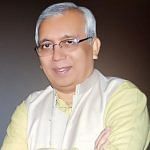 Kamal Faruqui
Kamal Faruqui
Former member, All India Muslim Personal Law Board
The Supreme Court has done a marvellous job in taking up the Ram Janmabhoomi-Babri Masjid case in real earnest. With daily hearings, fixing timelines and adjourning hearings by 16 October, the Supreme Court has done a yeoman’s job. Otherwise, it would not have been possible to complete the proceedings.
Since all the parties involved have presented their arguments in a highly professional manner, one would expect that justice would be served on the basis of facts produced. The Ayodhya case verdict has to be decided based on the title and other technicalities involved, and not on aastha (faith).
The opposition, the Sunni Waqf Board, has remained divided with the Nirmohi Akhara and Ram Lalla also fighting for the land. The Supreme Court must look at how long the dispute has been going on for. It must decide on facts and not on faith.
We have complete confidence that the Supreme Court will serve justice, which would be seen as a landmark judgment not only in the country, but also across the world.
On issues concerning Hindus, vanguards of democracy forget that ‘justice delayed is justice denied’
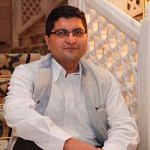 Arun Anand
Arun Anand
CEO of Indraprastha Vishwa Samvad Kendra, & author of The Saffron Surge: Untold Story of RSS
The legal battle for Ram Janmabhoomi started more than 160 years ago in the late 1850s. After a long and protracted legal battle, the Allahabad High Court in 2010 clubbed all the civil suits and announced one of the longest judgments – running into around 8,000 pages – in India’s judicial history.
The verdict settled most of the contentious issues in the Ayodhya case, including the key question about the birthplace of Lord Ram.
The judgment, however, distributed the disputed 2.77-acre plot among three parties, creating a very complicated situation. The parties appealed to the Supreme Court against the verdict of the Allahabad High Court.
The case is merely about a title suit and the question of determining Lord Ram’s birthplace along with the claim that Babar destroyed a Ram Mandir there to build a mosque. But these are no longer being discussed as the Allahabad High Court’s 2010 verdict was already in favour of Hindus.
The Supreme Court has been hearing the matter for eight years. The verdict should have come much earlier.
It would be pertinent to mention that the Ayodhya case has languished in the courtroom for more than 160 years. Hindus have waited patiently to abide by the rule of law. It is unfortunate that when it comes to issues concerning the Hindu community, many vanguards of democracy conveniently forget that ‘justice delayed is justice denied’.
Also read: There are 3 claims to Ayodhya — law, memory & faith. It’s not a simple Hindu-Muslim dispute
Supreme Court’s enthusiasm for quick result didn’t allow proper debate on conflicting claims of Hindu parties
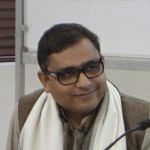 Hilal Ahmed
Hilal Ahmed
Associate professor, CSDS
First, the Supreme Court transformed the title suit over the ownership of the disputed land into a communal conflict. An impression was created that communal harmony between Hindus and Muslims could only be possible if the title suit in the Ayodhya case is resolved. This enthusiasm to achieve a quick and final solution dominated the court proceedings. As a result, the conflicting claims of Nirmohi Akhara and Ram Lalla Virajman — the so-called ‘Hindu parties’ — did not get adequate attention in public debates.
Second, in order to expedite the legal process, the Supreme Court adopted a highly mechanical interpretation of evidence. News reports confirm that the court treated the 1991 Historians’ Report to the Nation (which does not subscribe to the idea of any Ram Temple) as an opinion; while the 2003 Archaeological Survey of India report was recognised as a fact. This interesting tussle between history and archaeology seems to legitimise the colonial theory of desecration of Hindu temples by Muslim rulers as a historical precondition.
This courtroom drama has confirmed that the Ayodhya case is a political question, which cannot be solved entirely by a legal-judicial intervention.
Supreme Court was right in setting a deadline for final hearing to end decades-old Ayodhya dispute
Alok Kumar 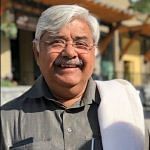
International Working President, VHP
If a case is closed 70 years after people began fighting it in the courts, then it is not called rushing. The Ram Janmabhoomi-Babri Masjid case is one that requires detailed attention.
First, the case was heard for 40 days. If we give roughly five hours for each hearing, it amounts to 200 hours of hearing in total. The only way to conclude the case was to regularly hear it, which is what the Supreme Court did.
Second, the appeals and cross-appeals in this case are of considerable social importance. The subject matters of various appeals have often been a cause of major upheavals and agitations, impacting the social life and politics of the country. Therefore, keeping the Ayodhya case in a limbo would have only prolonged period of strain, and thus it was necessary for it to be heard and resolved as quickly as possible. The Supreme Court was right in setting a deadline.
Third, the three parties involved got sufficient time to put forth their arguments. So, it will only be right to reiterate that the Ayodhya dispute case wasn’t rushed through in the courtrooms.
SC gave enough time to each party in Ayodhya case, so it’s not fair to say the hearing was rushed
 Syed Qasim Rasool Ilyas
Syed Qasim Rasool Ilyas
President, Welfare Party of India
The Ram Janmabhoomi-Babri Masjid case had been pending in the Supreme Court since 2011. We can’t say that the court rushed through the case. Chief Justice of India Ranjan Gogoi has to pronounce the final verdict before his retirement on 17 November, which is why there was a marathon hearing.
The emergency and urgency to conclude the Ayodhya case is of utmost importance.
No party involved can say that it did not get enough time to extensively put forth its case. So, it is not fair to say that this case was hurried.
We have said in the court that when the Babri Masjid was built, there was no Ram Mandir at that site. There used to be uninterrupted namaz. The matter acquired religious overtones only in 1989. Until then, nobody talked about the case in the context of ‘Ram Janmabhoomi’.
Faith must have some basis, theirs (Ram Lalla’s) didn’t. There is no historical record, evidence, or proof that corroborates their claims. On the contrary, we showed evidence to prove the government was paying grants for the Masjid’s maintenance.
We hope for a favourable judgment based on evidence and in keeping with the true spirit of the Indian Constitution.
Also read: CJI Ranjan Gogoi cancels foreign visit to ‘ensure’ Ayodhya verdict before his retirement
Nirmohi Akhara has been able to present its case very well, making optimum use of time given
 Karttik Chopra
Karttik Chopra
Spokesperson, Nirmohi Akhara
The Supreme Court has completed judicial proceedings in the Ayodhya case in a time-bound manner. We are hopeful of getting a judgment by next month, before CJI Ranjan Gogoi retires. We have been fighting the case since 1866.
However, it is difficult for me to say if the SC was fast or slow with its decision. We really cannot comment yet on whether the decision that the Supreme Court makes will be right or not, but we will follow the court orders.
I believe that between our verbal arguments and written submissions, the Nirmohi Akhara has been able to present its case very well, making optimum use of the time given. Our arguments were based on legal facts, evidence, record of past cases, and not purely on faith.
While the Sunni Waqf Board tried to prove that Babur indeed took over the disputed land, thereby justifying their claim to the land, they haven’t been able to successfully do so. The third party involved, Ram Lalla Virajman, claimed that the land belongs to a deity of which we, the Nirmohi Akhara, are the recognised representatives.
Also read: Lawyer for Muslim parties in Ayodhya case tears up map of Lord Ram’s birthplace in court
By Taran Deol, journalist at ThePrint


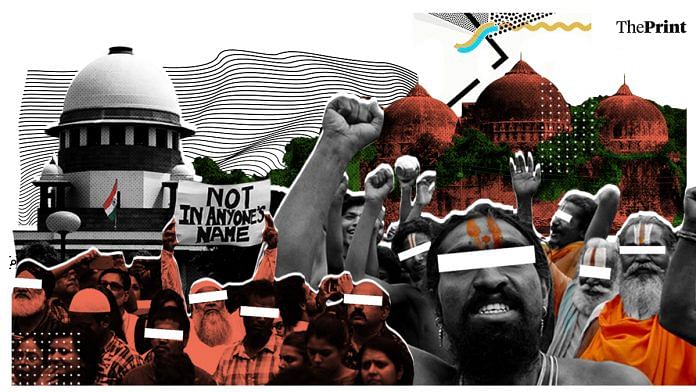

Most of the people who have expressed their views on the conduct of SC hearings have given fair opinions, except Hilal Ahmed, Associate professor, CSDS. He wanted the biased leftist opinion “Report to nation” to be treated as evidence. While the Report of Archaeological Survey is a report routinely prepared by ASI in the normal course of its duties, “Report to Nation” was an opportunistic publication given by so-called historians who had no experience in Archaeological matters. Each one of them was exposed during Cross-Examination before Allahabad HC as a fake, who claimed expertise where he or she had none. Anyone is entitled to his or her opinion including these historians. The court was justified in treating “Report to Nation” as mere opinion.
The undecided for 160 years , should be left so , for the gods themselves to decide .
If the choice is between strict legality and what one may call legality plus, informed by a sincere effort to find a solution that unites rather than divides the country, no reason why the heavy lifting should always require to be done by the Supreme Court. In a federal polity and a complex, diverse society, that is the task of the entire political class, led obviously by the government of the day. It is not sufficient to carry the loyal base, as Donald Trump does.
Hilal Ahmed presents a strange view point that a historians’ report has been considered as opinion while Archaeological Survey of India’s report is taken as a fact. What is wrong in that? Historians say lot of things and present conflicting view points. So many books are written on controversial topics, how many of them should be read by the court? Quite rightly , the SC has not considered a purported map of Ram Janma Bhoomi published in a book as an evidence and instructed all the parties not to bring out this matter again. This shows how impartial the judges are. However, report of the ASI is not just an opinion. It is professional job and was already taken into account by the High Court. The Muslim side didn’t object this when the matter was argued before the High Court.
Cut the Clutter hinted at an outcome which gives Hindus their Ram mandir, also treats the Muslim community with dignity and respect, allows a process of healing to start. If a creative recourse to Article 142 allows this to be achieved, many / most Indiand would be happy and relieved. However, it is not a question of awarding monetary or material compensation for a small piece of land. The events of 6th December 1992 are seared into the consciousness of all Indian Muslims, ideally all Indians of good conscience. For a genuine compromise to succeed, there should be relations between the two communities marked by cordiality and trust. Not a tumescent wave of majoritarianism.
No one would envy the learned judges their onerous task. Like the selection of the cricket team, each Indian will have an opinion on the final verdict. It will be held up by the most erudite and the least lettered of our countrymen, all of whom, irrespective of whether they are thrilled or heartbroken by the finding, must be convinced that there was a black band tied across the judges’ eyes. That is a test the apex court has almost invariably passed. 2. The time table of the hearings has been compressed, owing to CJI Ranjan Gogoi’s scheduled superannuation. He had some customary foreign visits scheduled, which have been sacrificed. Perhaps the Bench could have been presided over by the second senior most Judge. If litigants wanted a little extra time, mono harm in granting it to them. Another similar case will not present itself for a few centuries.